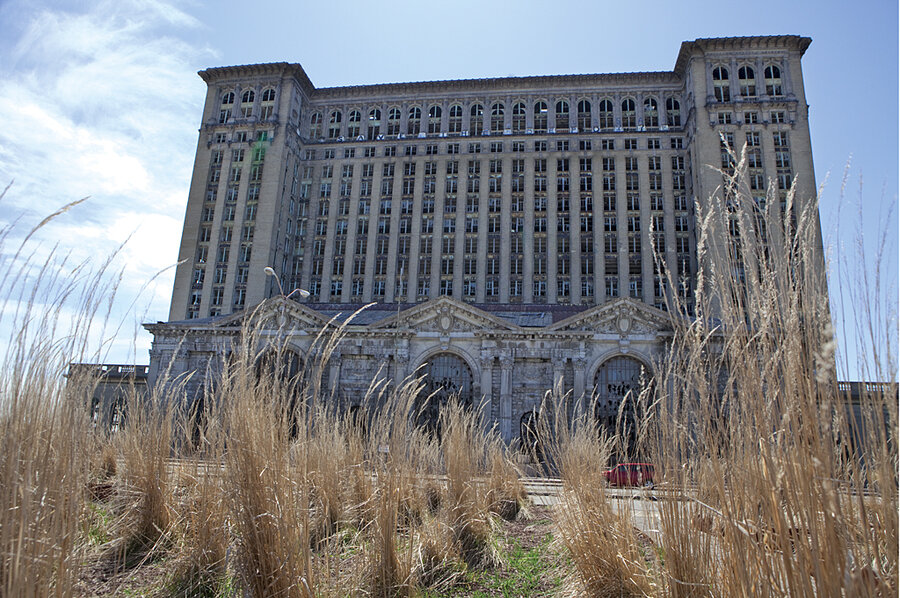A long, hard path to renewal
Loading...
Abandoned buildings have a curious afterlife. Where once they hummed with a thousand daily dramas, they turn creepy when the occupants are gone. Paint flakes, windows break, weeds intrude. Then come graffiti, vagrants, vandals, and small, furry animals.
In time, however, a vacant structure can reclaim its nobility. Throughout the American Midwest, the skeletons of old barns have inspired artists and sightseers, as have ramshackle piers along the New England coast and wisteria-choked mansions in the Deep South.
From Machu Picchu to Athens, Great Zimbabwe to Angkor Wat, the bleached bones of lost civilizations are magnets for exploration and tourism.Detroit has had the sad distinction in recent years as the American city with the most abandoned buildings. Many of its once-grand edifices, some with Art Deco flourishes from the 1910s and ’20s, are falling in.
In part, this is the natural process of creative destruction, old quarters outgrown decade by decade as Detroit’s great invention – the mass-produced automobile – enriched the Motor City. But when the auto industry went into decline, destruction outmatched creation. Pictures of Detroit’s urban decay can be found all over the Internet. One of the best photo essays was produced for Time magazine by French photographers Yves Marchand and Romain Meffre. The Vanity Ballroom and the United Artists Theater are especially haunting images along with ghost offices, crumbling factories, and tumbledown houses.
Detroit’s decay won’t be easily reversed, though in pockets there is evidence of renewal. Now home-steaders, urban farmers, entrepreneurs, and artists see opportunity amid the ruins. You can hear self-reliant hope in the words of musician Stephen Nawara, who says the spirit he encounters today is “Let’s do something we can do on our own.”
The creative is stirring.
John Yemma is editor of The Christian Science Monitor.





